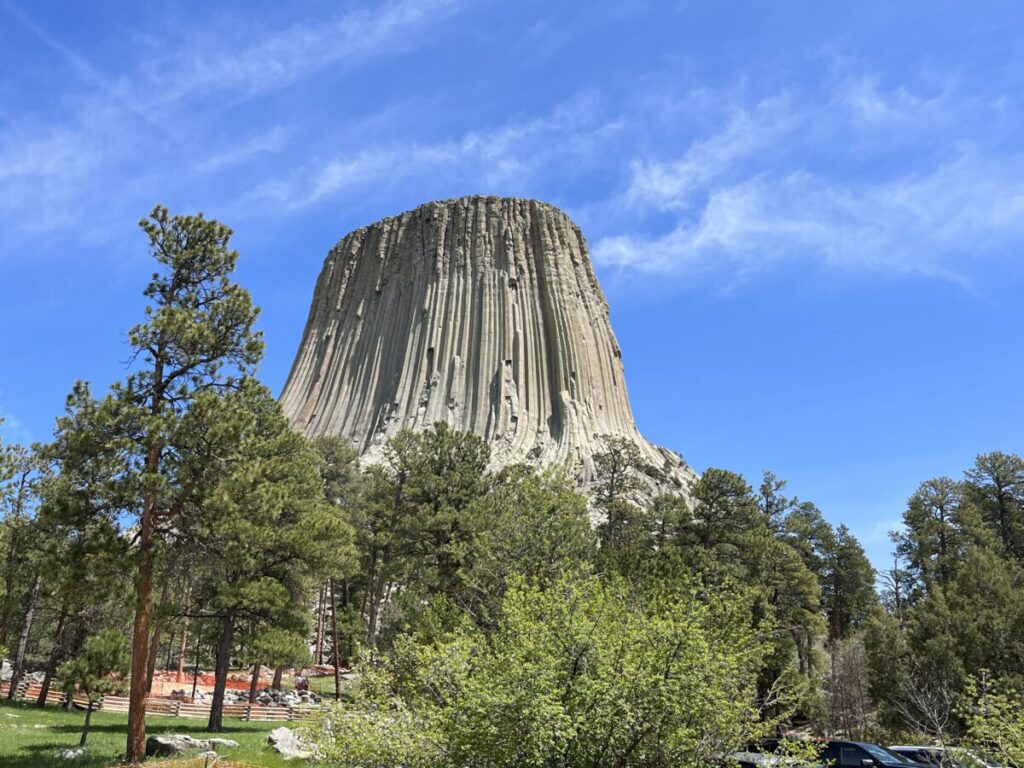Look at any guidebook to the Black Hills in Southwestern South Dakota and you’ll see a section about Devils Tower National Monument in neighboring Wyoming. If you’ve ever watched the movie “Close Encounters of the Third Kind,” you’ll immediately recognize the huge rock monolith that stretches up to the sky. But to get there, you will go to the Northern Black Hills first.
Just 40 miles from the South Dakota state line, the large rock structure appeared in the far distance. One of our first clear views of the tower featured cattle grazing nonchalantly on the hilly grassland nearby. Several cars pulled over to take pictures.
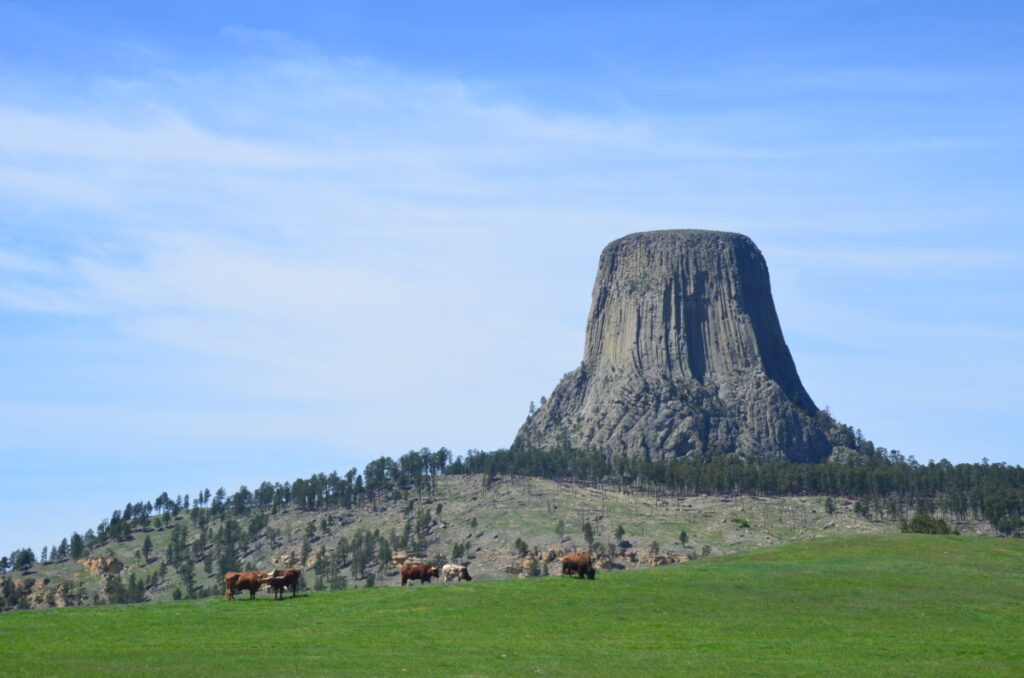
“It looks just like the pictures,” I thought to myself. Unspoiled and larger than life. Although a trading post resided near the entrance, no other tacky tourist places dominated the landscape.
Hiking the Tower Trail
Parking near the CCC-built visitor center, we hiked the 1.3-mile Tower Trail around the monolith’s base. Although the most hiked trail in the park, we didn’t find the paved trail crowded. But, it’s important to note we visited during the middle of the week in May – before Memorial Day and the summer tourist season. The trail features a great overview with signs explaining facts about the tower.
Geological History of the Tower
So how and why did Devil’s Tower come to be? Believe it or not, scientists still can’t explain it! The good news is that the tower isn’t a volcano. Instead, it is a rock formed over 50 million years ago from magma. For whatever reason, this molten material from below the earth’s surface pushed itself up above other rock layers in what is called an intrusion.
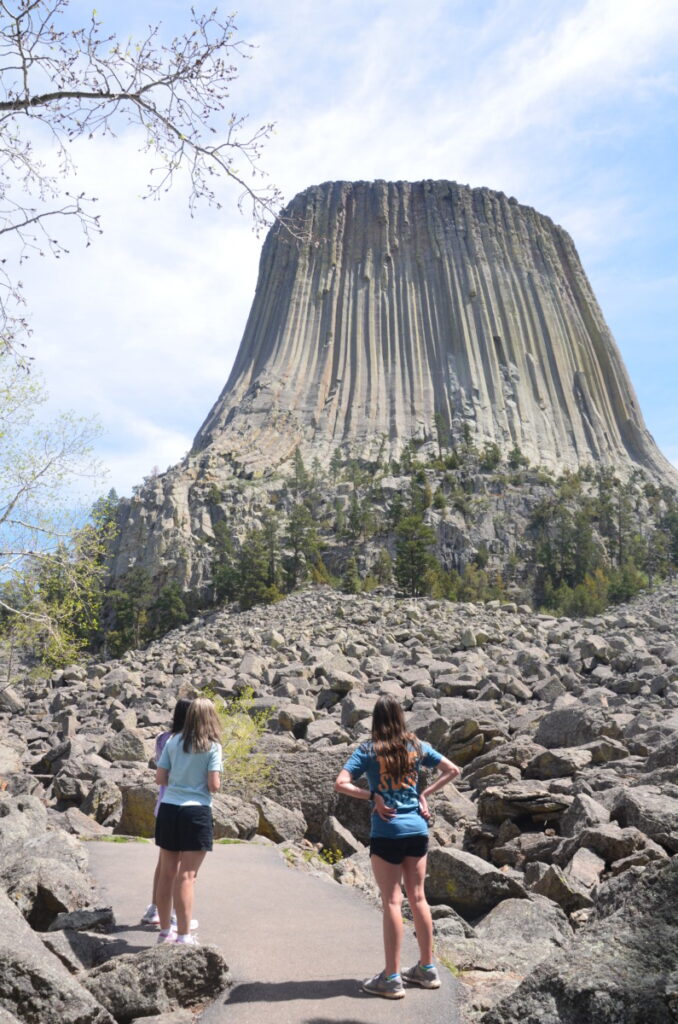
Regardless, the tower stands at 827 feet high. In layman’s terms, that’s almost three football fields tall! Interestingly enough, the tower may have been taller or wider. We started our hike near a boulder field that scientists think eroded from the tower.
The spiritual history of the tower
One of the reasons I didn’t get more pictures was out of respect for the numerous prayer cloths. The multi-colored cloths tied to the branches all along the trail represent prayers placed by visitors.

Since Native American Indians inhabited the land for thousands of years, it’s no wonder that numerous legends exist about the tower. Sioux legend claims that Mato, a giant bear, chased two boys. The spirit raised up the rock to rescue them while the bear clawed at the sides of the tower until giving up. The giant eagle, Wanblee, carries the boys back to the safety of their village.
In a similar fashion, the Kiowa say that seven young girls were chased by a bear and the rock rises out of the ground to save them. But in this story, the girls ascend up to the sky to form the “Seven Sisters” star cluster seen above the tower at night.
For centuries, Native Americans called the tower many names including Bear Lodge, Bear Mountain, Mato Tipila, or Bear Tipi. So how did it get the name Devil’s Tower? In 1875, an explorer, Colonel Richard Dodge, mistranslated the rock to Bad god’s Tower, which later translated to Devil’s Tower. Today, many Native American Indians find the current name disrespectful.
Climbing at the tower
As the tower trail took us around the rock and gave us insight into its history, we noticed groups of people climbing the vertical rock columns. Using a telephoto lens, we watched these daring athletes continue their ascent to the top.
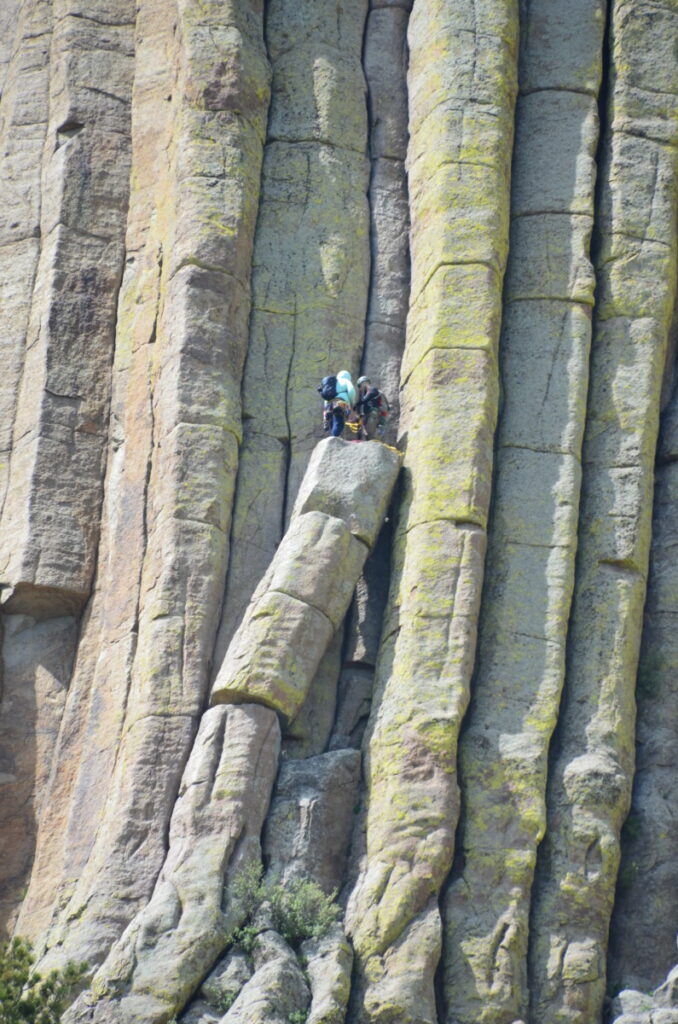
The first climber to reach the summit was a Wyoming rancher named William Rogers in 1893. The top measures over an acre and contains a rocky and grass-laden surface. Climbers go in pairs and can reach the top in about six hours. However, they must climb down as the park prohibits overnight guests.
After finishing the trail, we stepped into the visitor center. DH asked why there was no reference to the movie, “Close Encounters.” The ranger responded that the park service wants to preserve the dignity of the park and not commercialize it.
Prairie Dog Town
Heading out of the park, we stopped by the prairie dog town. Hundreds of little heads popped up, burrowed below the ground, and made funny noises at us. Whether they felt glad to have an audience or annoyed by us, who knows? I just couldn’t get enough of these little guys!
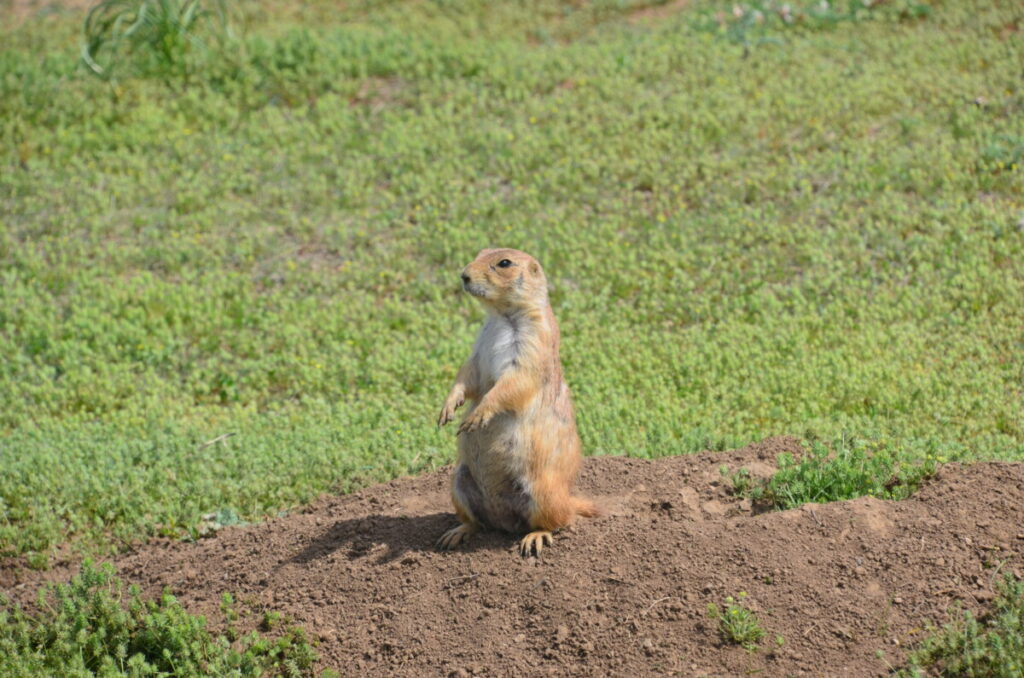
More Information
To enter the parking lot, visitors much pay $25 per vehicle or have an annual National Parks Pass. While the park only encompasses two square miles, visitors hike five separate trails. For more information, click here.
